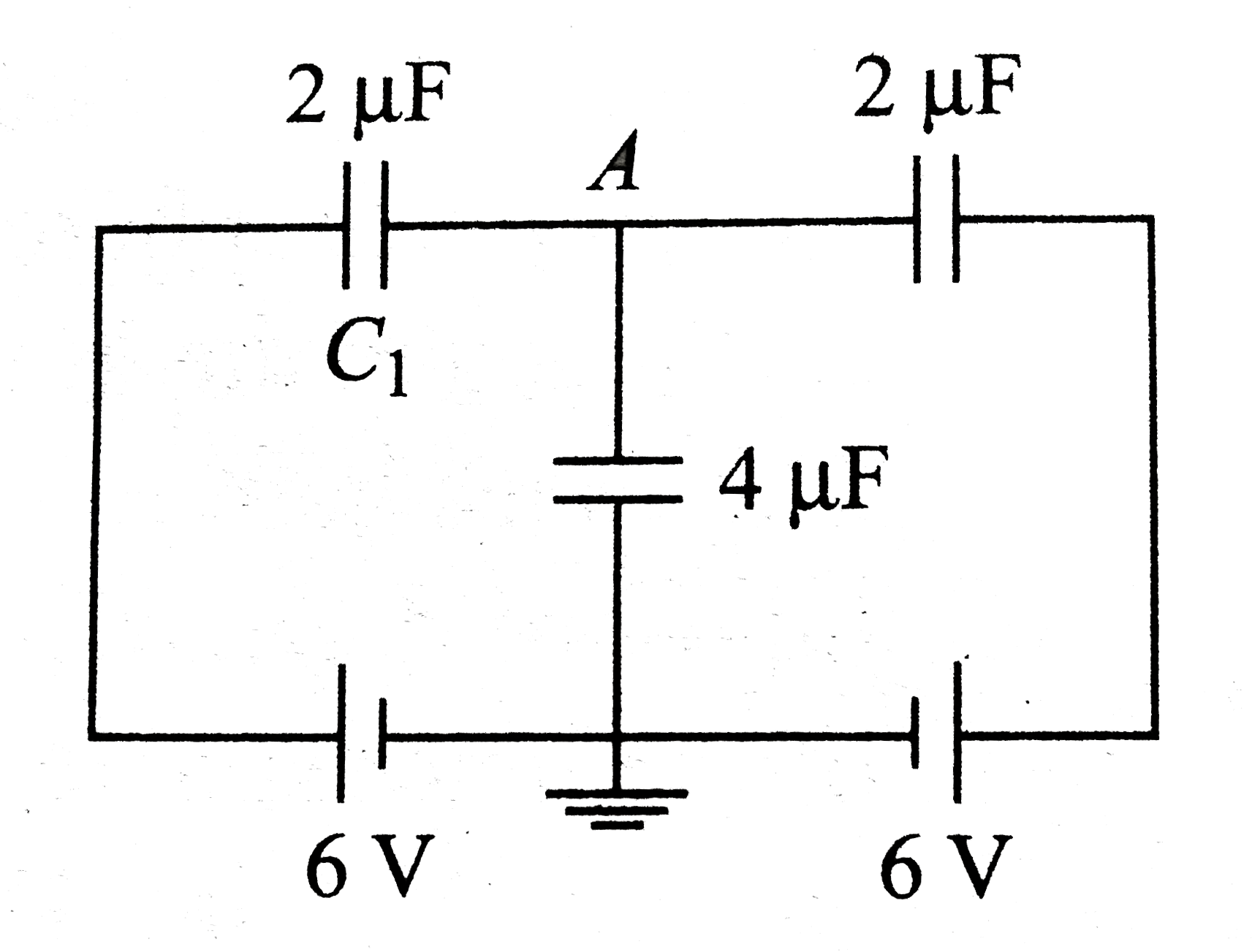Assertion: Charge on all the condensers connected is series in the same.
Reason : Capacitance of capacitor is directly proportional to charge on it.
If both assertion and reason are ture and reason is the correct explanation of assertion.
If both assertin and reason are ture but reason is not the correct explanation of assertion .
If assertion is true but reason is false.
If both assertion and reason are false.
The correct Answer is:C
To solve the question, we need to analyze the assertion and the reason provided.
1. Understanding the Assertion:
- The assertion states that the charge on all the condensers (capacitors) connected in series is the same.
- In a series connection of capacitors, the same charge flows through each capacitor. This is due to the fact that there is only one path for the charge to flow, thus the charge on each capacitor must be equal.
2. Analyzing the Reason:
- The reason states that the capacitance of a capacitor is directly proportional to the charge on it.
- The relationship between charge (Q), capacitance (C), and voltage (V) is given by the formula:
Q=C⋅V
- From this equation, we can see that capacitance (C) is not directly proportional to charge (Q). Instead, capacitance is a property of the capacitor that depends on its physical characteristics (area of the plates, distance between them, and the dielectric material) and is independent of the charge.
3. Conclusion:
- The assertion is true: the charge on all capacitors in series is indeed the same.
- The reason is false: capacitance is not directly proportional to charge. It is a fixed property of the capacitor based on its physical configuration.
- Therefore, the reason does not correctly explain the assertion.
Final Answer:
- The assertion is true, but the reason is false.
- The assertion states that the charge on all the condensers (capacitors) connected in series is the same.
- In a series connection of capacitors, the same charge flows through each capacitor. This is due to the fact that there is only one path for the charge to flow, thus the charge on each capacitor must be equal.
- The reason states that the capacitance of a capacitor is directly proportional to the charge on it.
- The relationship between charge (Q), capacitance (C), and voltage (V) is given by the formula:
Q=C⋅V
- From this equation, we can see that capacitance (C) is not directly proportional to charge (Q). Instead, capacitance is a property of the capacitor that depends on its physical characteristics (area of the plates, distance between them, and the dielectric material) and is independent of the charge.
- The assertion is true: the charge on all capacitors in series is indeed the same.
- The reason is false: capacitance is not directly proportional to charge. It is a fixed property of the capacitor based on its physical configuration.
- Therefore, the reason does not correctly explain the assertion.
- The assertion is true, but the reason is false.
Topper's Solved these Questions
- ELECTROSTATIC POTENTIAL AND CAPACITANCE Book:NCERT FINGERTPS ENGLISHChapter:ELECTROSTATIC POTENTIAL AND CAPACITANCE Exercise:Electric Potential
Explore 3 Videos
- ELECTROSTATIC POTENTIAL AND CAPACITANCE Book:NCERT FINGERTPS ENGLISHChapter:ELECTROSTATIC POTENTIAL AND CAPACITANCE Exercise:Potential Due To A Point Charge
Explore 7 Videos
- ELECTROSTATIC POTENTIAL AND CAPACITANCE Book:NCERT FINGERTPS ENGLISHChapter:ELECTROSTATIC POTENTIAL AND CAPACITANCE Exercise:EXEMPLAR PROBLEMS
Explore 3 Videos
- ELECTROMAGNETIC WAVESBook:NCERT FINGERTPS ENGLISHChapter:ELECTROMAGNETIC WAVESExercise:Assertion And Reason
Explore 15 Videos
- MAGNETISM AND MATTER Book:NCERT FINGERTPS ENGLISHChapter:MAGNETISM AND MATTER Exercise:NCERT Exemplar
Explore 5 Videos
Similar Questions
Find the charged stored in all the capacitors

View SolutionA 1.5μf capacitor is charged to 20 V. The charging battery is then disconnected and a 15 mH coil is connected in series with the capacitance so that LC oscillations occur. Write the equation for variation of charge on capacitor and current in the inductor with time taking at the instant at which inductor is connected to the capacitor at t = 0
View Solution
Knowledge Check
Assertion: Increasing the charge on the plates of a capacitor means increasing the capacitance.
Resion : Capacitance is directly proportinal to charge.AIf both assertion and reason are ture and reason is the correct explanation of assertion.BIf both assertin and reason are ture but reason is not the correct explanation of assertion .CIf assertion is true but reason is false.DIf both assertion and reason are false.
Assertion: On going away from a point charge or a small electric dipole, electric field decreases at the same rate in both the cases
Reason: Electric field is inversly proportional to square of distance from the charge or an electric dipole.
View SolutionIn the circuit shown in figure, the charge stored on a capacitor of capacitance 3μF is

View SolutionThe charge on the condenser of capacitance 2μF in the following circuit will be -

View SolutionTwo identical capacitors are first connected in series and then in parallel. The ratio of equivalent capacitance is
View SolutionThree capacitors are connected as shwn in. Then, the charge on capacitor C1 is .
 .
.
View SolutionAssertion: A dielectric slabis inserted between plates of an isolated capacitor. charge on capacitor will remain same.
Reason Charge on an isolated system is conserved.
View SolutionAn uncharged capacitor is connected in series with a resistor and a battery. The charging of the capacitor starts at t=0. The rate at which energy stored in the capacitor:-
View Solution